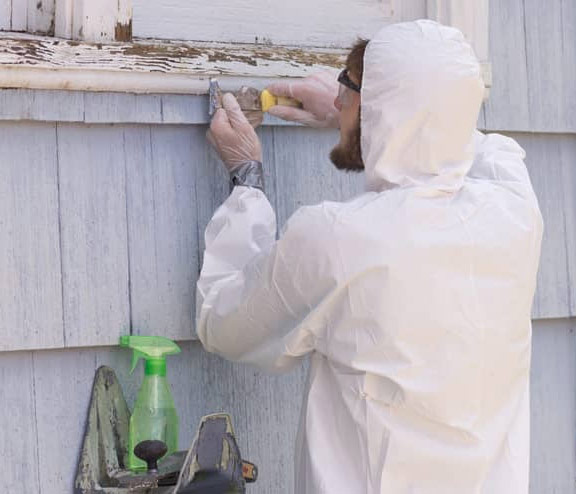Lead Paint Removal Service-- NYC's Trusted Solutions for Lead Safety And Security
Lead Paint Removal Service-- NYC's Trusted Solutions for Lead Safety And Security
Blog Article
Comprehensive Guide on Effective Lead Offense Removal Methods
In the realm of environmental safety, dealing with lead offenses requires a meticulous and structured approach. This extensive overview begins by highlighting the vital first steps of determining lead risks via advanced analysis and screening approaches. Strategies such as XRF evaluation and dirt clean tasting are vital in determining contamination sources. Moreover, the guide specifies on the value of sticking to stringent safety and security protocols during the elimination procedure, consisting of making use of appropriate PPE and separating affected areas (Lead Paint Removal Company). The subsequent areas promise to review post-removal verification and preventative strategies, making sure long-lasting safety and conformity. Discover the detailed details that make these methods not just efficient but necessary.
Determining Lead Threats
Identifying lead dangers is a vital first action in alleviating the risks associated with lead direct exposure. Lead, a hazardous metal, can be existing in various environmental tools, consisting of paint, dirt, water, and dirt.
The first stage in determining lead risks involves understanding typical lead resources within the constructed atmosphere. Structures developed before 1978 are especially prone because of the common usage of lead-based paint throughout that duration. Additionally, soil contamination can take place from deteriorating outside paint, commercial exhausts, or historic use leaded fuel.
One more substantial resource is lead piping and plumbing components, which can leach lead into alcohol consumption water. Durable goods such as playthings, porcelains, and imported items may likewise have hazardous lead levels. Notably, job-related atmospheres and leisure activities involving lead can track impurities right into homes.
Analysis and Screening
When dealing with lead risks, effective evaluation and screening are extremely important. This crucial step ensures the recognition and quantification of lead presence, therefore leading subsequent remediation initiatives. First evaluation usually entails a visual examination to identify possible lead resources, such as weakening paint or polluted dirt. This is matched by more strenuous testing approaches to determine the level of contamination.

Dirt clean tasting is an additional essential strategy, specifically in residential setups. By collecting examples from floors, windowsills, and other surface areas, this technique provides understandings into potential exposure dangers. Additionally, dirt screening around structure boundaries is essential to discover lead contamination that could present dangers, particularly to children.
Safe Removal Procedures
Upon completing extensive evaluation and testing, implementing safe important source elimination treatments is the next critical stage in addressing lead dangers. This procedure guarantees that lead-contaminated materials are properly and securely eradicated, minimizing threat to both employees and locals. The first action includes isolating the damaged location utilizing plastic sheet and proper securing methods to avoid the spread of lead dust.
Employees have to wear ideal individual safety devices (PPE), consisting of respirators, handwear covers, and non reusable coveralls, to alleviate direct exposure. Using specialized devices and damp techniques, such as wet fining sand or using HEPA-filtered vacuums, reduces the diffusion of lead particles. It is crucial to avoid dry sanding or unpleasant blowing up, as these methods can create unsafe lead dirt.
Waste disposal is one more vital element; all contaminated materials should be safely bagged and identified according to EPA and regional laws. In addition, thorough cleaning of the workspace with HEPA vacuums and damp wiping guarantees the removal of recurring lead particles.
Post-Removal Verification

Verification of successful lead removal, understood as post-removal verification, is important to ensure the safety and security and habitability of the remediated location. This evaluation guarantees that all known resources of lead have been dealt with and that no noticeable indicators of contamination continue to be.
Complying with the aesthetic evaluation, ecological tasting is performed. This involves gathering dirt, soil, and occasionally water examples from the remediated area. Recognized research laboratories analyze these samples to gauge lead degrees, ensuring they fall below the security limits established by regulatory bodies such as the Epa (EPA)
On top of that, air quality testing might be carried out to identify air-borne lead particles, especially in cases where comprehensive lead-based paint removal or remodelling has actually occurred. The results of these examinations offer quantitative data validating that the lead degrees are within acceptable limitations.
Inevitably, post-removal confirmation acts as a vital checkpoint, validating the effectiveness of the lead abatement initiatives and securing the health and wellness of owners and visitors.
Safety Nets and Upkeep

A key safety net consists of making use of lead-safe certified service providers for any kind of renovation, repair work, or paint tasks. These specialists are learnt methods that decrease lead dust and debris. Furthermore, maintaining painted surface areas to stay clear Visit Website of cracking or peeling off is important, as degrading paint can release lead fragments right into the atmosphere.
Educational campaigns targeting imp source home proprietors and occupants regarding the risks of lead and the relevance of reporting any kind of possible hazards can further improve preventive efforts. Regular cleaning utilizing HEPA vacuums and damp mopping strategies can significantly decrease lead dirt accumulation.
Final Thought
In recap, effective lead offense elimination requires a meticulous technique encompassing extensive evaluation, specific testing, and strict removal treatments. Ongoing evaluations and maintenance are essential to alleviate future lead risks, consequently safeguarding public wellness and ensuring continual compliance with governing requirements.
Report this page